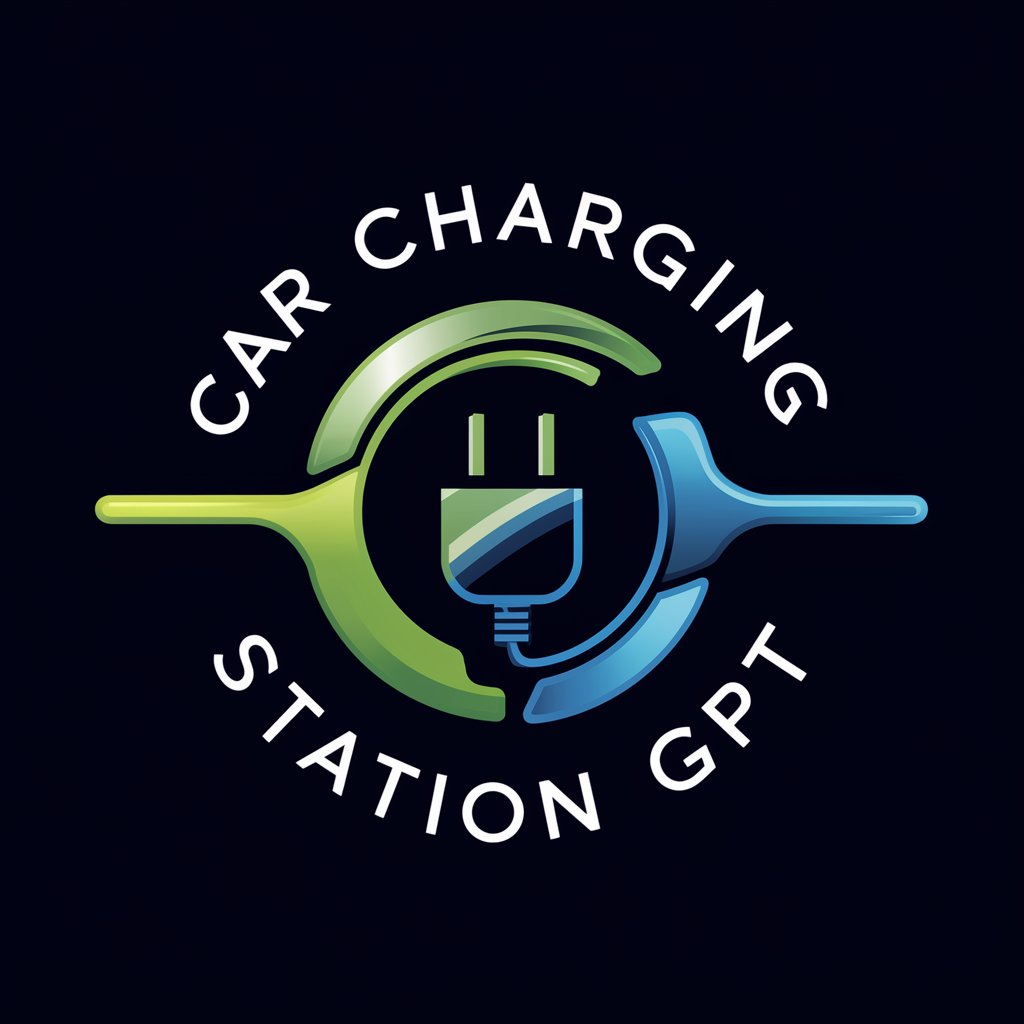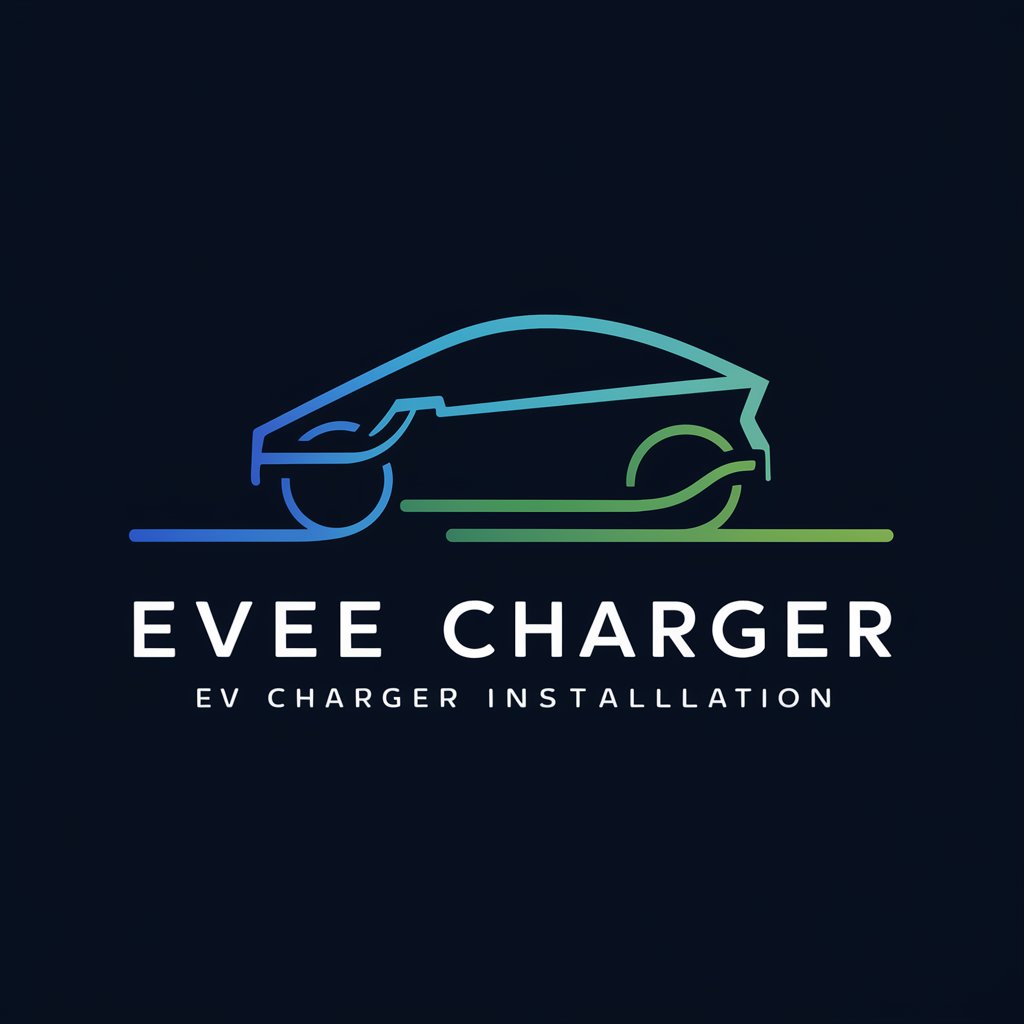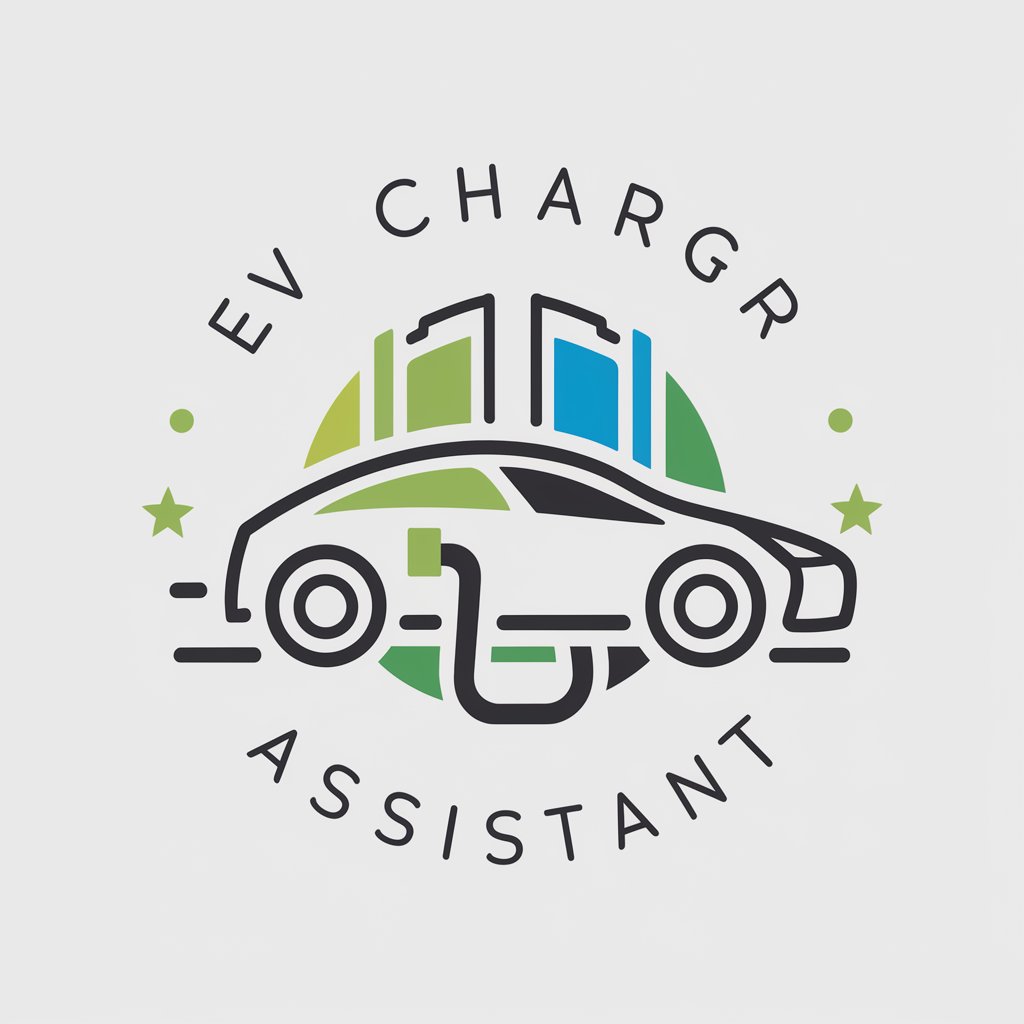
Car Charging Station - EV Charging Guide

Welcome! I'm here to help you with all your car charging station needs.
Powering your journey, AI-enhanced charging.
Can you explain the different types of electric vehicle charging stations?
What are the best practices for using public car charging stations?
Which electric vehicles are compatible with Level 3 fast chargers?
How can I find the nearest car charging station on a road trip?
Get Embed Code
Overview of Car Charging Stations
Car Charging Stations are specialized infrastructure designed to recharge electric vehicles (EVs). These stations vary in charging speed, capacity, and connectivity options, catering to different user needs and vehicle specifications. From Level 1 chargers, offering slow, plug-in options suitable for overnight use at home, to Level 3 or DC fast chargers, which can recharge an EV's battery to 80% in as little as 20 minutes, the design of these stations is focused on accessibility, convenience, and efficiency. An example scenario illustrating the purpose of car charging stations is an EV driver embarking on a long-distance journey. They would rely on a network of strategically located DC fast charging stations along their route to quickly recharge their vehicle, minimizing downtime and making electric travel feasible and efficient. Powered by ChatGPT-4o。

Key Functions of Car Charging Stations
Providing Electric Energy to EVs
Example
AC Level 2 charging stations
Scenario
Used in residential and commercial settings, allowing EV owners to recharge their vehicles typically within a few hours, suitable for daily use.
Rapid Charging for Long-Distance Travel
Example
DC Fast Charging stations
Scenario
Located along highways and in urban centers, these stations enable EV drivers to quickly recharge their batteries during long trips, significantly reducing charging time.
Smart Charging and Load Management
Example
Networked charging stations with app connectivity
Scenario
These stations offer features like remote monitoring, scheduling charging sessions during off-peak electricity rates, and managing the energy load on the grid, thereby optimizing energy consumption and reducing costs for users.
Supporting Renewable Energy Integration
Example
Charging stations powered by solar panels
Scenario
These eco-friendly stations allow for charging EVs using renewable energy, reducing the carbon footprint associated with electric vehicle charging.
Ideal Users of Car Charging Station Services
Electric Vehicle Owners
Individuals or families owning or leasing electric vehicles, seeking convenient, reliable, and efficient means to recharge their vehicles at home, work, or during travel.
Commercial and Fleet Operators
Businesses operating fleets of electric vehicles, including delivery services, public transportation, and corporate fleets, requiring efficient charging solutions to ensure operational efficiency and reduce downtime.
Property Managers and Businesses
Commercial properties, shopping centers, and workplaces looking to offer EV charging as an amenity to customers, employees, or tenants, enhancing property value and supporting sustainable practices.
Municipalities and Public Institutions
Governments and public organizations aiming to promote the adoption of electric vehicles in their communities by providing public charging infrastructure, thus contributing to environmental goals and reducing urban pollution.

Using Car Charging Station: A Step-by-Step Guide
Initiate the process
Start by exploring yeschat.ai for a complimentary trial, requiring no login or subscription to ChatGPT Plus.
Locate a charging station
Use a dedicated app or website to find the nearest electric vehicle (EV) charging station that is compatible with your vehicle.
Prepare for charging
Park your vehicle ensuring the charging port is within reach of the station's cable. Turn off the vehicle and unlock the charging port if necessary.
Connect and charge
Follow the instructions at the station to connect your EV. This may involve scanning a QR code, using an app, or a membership card to initiate the charging process.
Monitor and disconnect
Keep an eye on the charging status through the station's screen or your vehicle's app. Once charging is complete, safely disconnect and store the cable, then proceed with your journey.
Try other advanced and practical GPTs
Website Valuation Tool - Calculate Website Worth
AI-Powered Website Valuation at Your Fingertips

GDPR Guru
Simplifying GDPR compliance with AI-powered guidance.

Solid Protect
Elevating fire safety with advanced AI insights

AI Act Companion
Navigate AI Law with AI-Powered Precision

SMV: Grant Guide
Streamlining EU Grant Applications with AI

analyse concurrence
AI-Powered Competitive SEO Analysis

Zebra Huntress
AI-powered Company Insights

Expert
Empower Your Creativity with AI

Lawn Post Assistant
Craft Your Lawn's Story with AI

Social Media Strategist
Elevate Your Social Game with AI

Video Revenue Analyst
Optimize your Facebook video earnings with AI.

MetaMender
Optimize Metadata, Maximize Reach

Car Charging Station: Frequently Asked Questions
What types of charging stations are available?
There are primarily three types of EV charging stations: Level 1, Level 2, and DC Fast Charging. Level 1 uses a standard household outlet, Level 2 offers faster charging and requires a 240V supply, and DC Fast Charging provides rapid charging for compatible vehicles.
How do I know if a charging station is compatible with my vehicle?
Compatibility depends on the connector type of your EV and the station. Most EVs use either a J1772 connector for AC charging or a CCS/CHAdeMO for DC fast charging. Always check the station's details before attempting to charge.
Can I use any charging station app?
Yes, there are multiple apps available to locate and access EV charging stations, such as PlugShare, ChargePoint, and the EV manufacturer's own app. These apps provide information on station location, availability, and compatibility.
What are the costs associated with using a public charging station?
Charging costs can vary widely. Some stations offer free charging, while others charge per hour, per kWh, or require a session fee. Rates are typically provided on the station's app or website.
How long does it take to charge an EV?
Charging time varies by the type of charger, the vehicle's battery capacity, and the current state of charge. Level 1 charging can take 8-20 hours, Level 2 charging 4-8 hours, and DC Fast Charging can provide 80% charge in 20-30 minutes for compatible vehicles.






